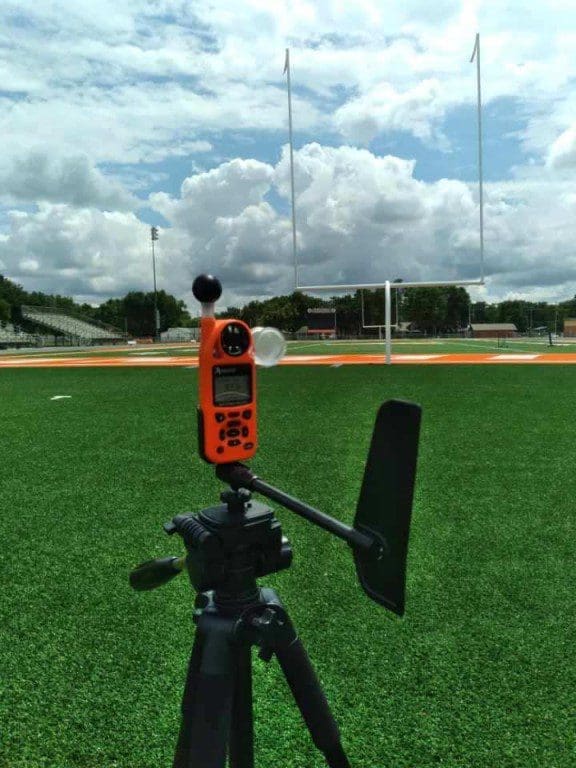Kansas — Excessive heat, combined with high humidity, is always a dangerous combination this time of year in Kansas.
This combination is closely monitored as school sports and activities get back underway for the fall season. Beginning this year, all schools now have a way to track weather conditions, for the safety of student-athletes.
School staff across the state will track how the temperature feels to the human body using Wet Bulb Globe Temperature (WBGT) values instead of Heat Index values when making activity modification decisions. WBGT is a measure of air temperature, relative humidity, wind speed, sun angle, and cloud cover.
In April of this year, the Kansas State High School Activities Association (KSHSAA) Sports Medicine Advisory Committee provided updates to the KSHSAA Recommended Activity Modification Policy during periods of elevated heat/humidity. The KSHSAA Executive Board unanimously approved the updates at their April 2022 meeting. The motivation for the policy change was the availability of a grant to provide member schools with a Kestrel 5400 Heat Stress Tracker. All 364-member high schools across the state of Kansas have been provided with one of these units.
In support of this endeavor, Kansas Athletic Trainers’ Society (KATS) members were instrumental in helping to get this initiative started at member schools. The KATS team produced a series of videos that explains the setup of the Kestrel unit using KSHSAA recommended values, along with proper rapid cooling options. Justin Clark, Athletic Trainer at Memorial Health System Rehabilitation and Sports Medicine and for Abilene High School, is the President-Elect for KATS, and sits in on the KSHSAA Sports Medicine Advisory Committee. Clark was a part of the sub-committee for updating the earlier mentioned policy. Abilene High School has implemented a similar policy for the past several years; a Kestrel unit was purchased and practice modifications are based on the daily WBGT. Each school should have a policy in place for appropriate activity modification during periods of excessive heat and humidity.
Exertional Heat Illness (EHI) is a term for different conditions that may result from participation in environments of extreme temperature and/or humidity. Heat cramps, heat syncope, heat exhaustion, and exertional heat stroke (EHS) are all conditions that could result from prolonged participation in this type of environment. Exertional Heat Stroke (EHS) is a life-threatening condition and one of the leading causes of preventable death in high school activities. Students who do not properly acclimatize to the heat, do not hydrate properly, have a poor diet and/or are ill/recovering from an illness are more susceptible to all types of EHI. “The Kestrel unit provides technology to help athletic trainers, coaches, and administrators keep our student-athletes safe when the weather is hot and humid,” said Clark.
There are a number of heat illness risk factors that can contribute to problems for student-athletes. According to KSHSAA, schools are encouraged to make every reasonable effort to have an athletic trainer or other healthcare professional onsite during high risk athletic activities and activities taking place in conditions of extreme temperature and or humidity.
Every school should have a written Emergency Action Plan (EAP) in place for every activity and every venue where activities take place. This plan should include handling heat illness emergencies.













